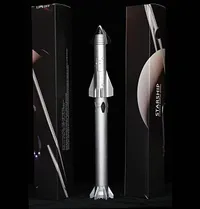SpaceX refutes reports that its Starship launch pad system polluted Texas waters
The private spaceflight company refutes claims that its Starship launch pad water deluge system violates regulations.

SpaceX has strongly refuted a media report claiming the company violated environmental regulations by releasing pollutants related to Starship launches in South Texas.
CNBC reported on Aug.12 that "Elon Musk's SpaceX violated environmental regulations by repeatedly releasing pollutants into or near bodies of water," through its water deluge system at its Starbase launch facility, South Texas, citing a state agency.
The report claims that industrial wastewater is discharged into nearby bodies of water by SpaceX's deluge system. The report cites a notice of violation of the Clean Water Act issued by the Texas Commission on Environmental Quality (TCEQ). The related investigation "found that SpaceX discharged industrial wastewater without a permit four times between March and July of this year," according to CNBC.
Starship Die Cast Rocket Model Now $69.99 on Amazon.
If you can't see SpaceX's Starship in person, you can score a model of your own. Standing at 13.77 inches (35 cm), this is a 1:375 ratio of SpaceX's Starship as a desktop model. The materials here are alloy steel and it weighs just 225g.
Note: Stock is low so you'll have to act quickly to get this.
The deluge system is used for Starship flight safety and protecting launch infrastructure and its surroundings by absorbing the intense heat and vibrations of launch.
The violations could threaten SpaceX's ambitions to increase Starship launches from its Starbase facility, according to CNBC.
Related: SpaceX rivals challenge Starship launch license in Florida over environmental, safety concerns
The company used the X social media platform, which like SpaceX is owned by Elon Musk, to respond to the claims. “CNBC’s story on Starship’s launch operations in South Texas is factually inaccurate,” SpaceX said in its extended post.
Breaking space news, the latest updates on rocket launches, skywatching events and more!
The post states that SpaceX uses potable water for its deluge system, rather than water exposed to industrial processes. It also states that the company has been in consultation with TCEQ and the EPA Environmental Protection Agency (EPA), which issued a notice of violation in March this year.
"Throughout our ongoing coordination with both TCEQ and the EPA, we have explicitly asked if operation of the deluge system needed to stop and we were informed that operations could continue," the post read.
A separate SpaceX post also refutes CNBC claims of high mercury levels found in water outfalls. "The lab reports clearly states that levels of Mercury found in non-stormwater discharge associated with the water deluge system are well below state and federal water quality criteria," the SpaceX post read.
SpaceX said it expects TCEQ to issue a required permit and agreed compliance order this week to allow it to continue operating the deluge system.
Launch service providers generally need to be in compliance with state and federal laws to gain approval from the Federal Aviation Administration for future launches, CNBC stated.
It is unclear if the reported violations will impact SpaceX's plans for its upcoming fifth flight of Starship and its Super Heavy booster.
"Flight 5 Starship and Super Heavy are ready to fly, pending regulatory approval," the company stated on X on Aug. 8.

Andrew is a freelance space journalist with a focus on reporting on China's rapidly growing space sector. He began writing for Space.com in 2019 and writes for SpaceNews, IEEE Spectrum, National Geographic, Sky & Telescope, New Scientist and others. Andrew first caught the space bug when, as a youngster, he saw Voyager images of other worlds in our solar system for the first time. Away from space, Andrew enjoys trail running in the forests of Finland. You can follow him on Twitter @AJ_FI.

